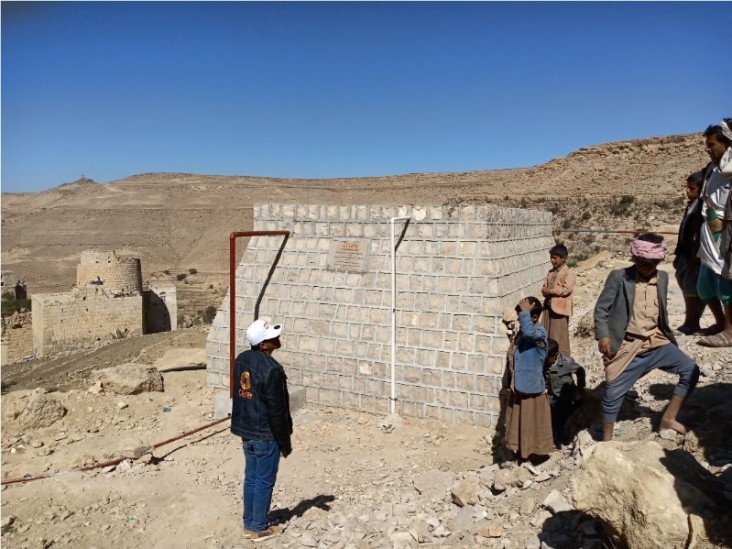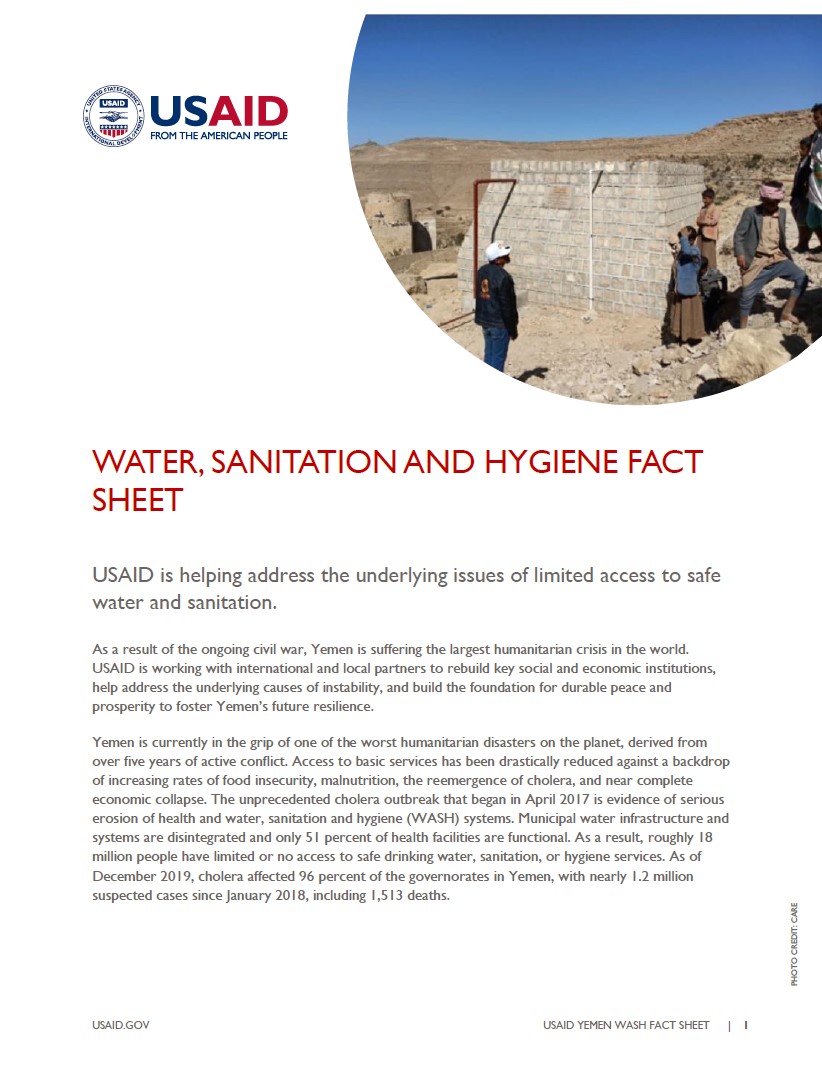Speeches Shim

USAID is helping address the underlying issues of limited access to safe water and sanitation.
As a result of the ongoing civil war, Yemen is suffering the largest humanitarian crisis in the world. USAID is working with international and local partners to rebuild key social and economic institutions, help address the underlying causes of instability, and build the foundation for durable peace and prosperity to foster Yemen’s future resilience.
Yemen is currently in the grip of one of the worst humanitarian disasters on the planet, derived from over five years of active conflict. Access to basic services has been drastically reduced against a backdrop of increasing rates of food insecurity, malnutrition, the reemergence of cholera, and near complete economic collapse. The unprecedented cholera outbreak that began in April 2017 is evidence of serious erosion of health and water, sanitation and hygiene (WASH) systems. Municipal water infrastructure and systems are disintegrated and only 51 percent of health facilities are functional. As a result, roughly 18 million people have limited or no access to safe drinking water, sanitation, or hygiene services. As of December 2019, cholera affected 96 percent of the governorates in Yemen, with nearly 1.2 million suspected cases since January 2018, including 1,513 deaths.
USAID'S RESPONSE AND EXPECTED RESULTS
USAID Yemen Water, Sanitation and Hygiene Fact Sheet ![]() (pdf - 163k)
(pdf - 163k)
USAID and its partners are working to provide water and sanitation assistance to vulnerable populations including those affected by the conflict. USAID is implementing programming that addresses the underlying issues of limited access to safe water and sanitation. USAID’s Comprehensive WASH Support (CWS) project improves access to safe and adequate water supply and basic sanitation infrastructure for households, hospitals, and schools. It also builds resilience of the population by encouraging adoption of positive health and hygiene behaviors within the most vulnerable communities. CWS improves sustainable environmental health conditions in communities by strengthening WASH infrastructure and service delivery through rehabilitation of pipes and water sources, latrines, and sanitation services. The activity aims to reach at least 43,000 direct beneficiaries over three years (2018-2021).
The Addressing Water Services project focuses on the most vulnerable internally displaced persons (IDPs) and households in the communities that host IDPs. This project improves vulnerable populations’ short-term access to WASH needs. Interventions include improving awareness of hygiene practices, building institutional and operational capacities of public/private service providers, as well as promoting innovative water-saving methodologies at the household level and sustainable water resources management in agriculture. The project will target over 72,000 people with water supply activities, more than 49,700 people with sanitation activities, and at least 280,000 people will participate in hygiene promotion sessions. This project is expected to increase access to WASH services for more than half a million indirect beneficiaries.
The interventions support USAID and U.S. Government priorities outlined in the U.S. Global Water Strategy and the USAID Water and Development Plan. The U.S. Global Water Strategy, required by the Water for the World Act of 2014, articulates the first-ever whole-of-Government framework for the United States to advance global leadership on challenges related to water and sanitation ensuring people have sustainable, sufficient, and clean supplies of water to be healthy, prosperous, and resilient.


Comment
Make a general inquiry or suggest an improvement.